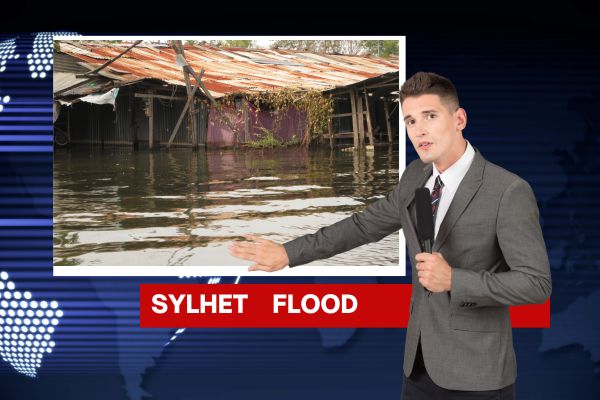Sylhet Flood: Understanding the Devastating Impacts and the Road to Recovery
The recent flood in Sylhet, Bangladesh has caused widespread devastation, affecting thousands of families and leaving behind a trail of destruction. The flood has caused severe damage to homes, infrastructure, and crops, leaving many families homeless, hungry, and without basic necessities. The situation is critical, and urgent action is needed to support the affected communities in their recovery efforts.
Understanding the Sylhet Flood
The Sylhet Flood was caused by heavy rainfall, which led to overflowing rivers and landslides in the hilly areas. The flood has affected many parts of the Sylhet division, including the districts of Sylhet, Sunamganj, and Habiganj. The flood has caused severe damage to homes, infrastructure, and crops, with many areas remaining inundated for several days.
Devastating Impacts of the Sylhet Flood
The Sylhet Flood has caused significant impacts on the affected communities. Many families have lost their homes and belongings, with some forced to take refuge in overcrowded shelters. The flood has also damaged critical infrastructure, including roads, bridges, and water supply systems. As a result, many communities are facing severe food and water shortages, putting the lives of vulnerable groups, including women and children, at risk.
Road to Recovery
The road to recovery for the affected communities is long and challenging. Urgent action is needed to support the affected families and ensure they have access to basic necessities. This includes providing shelter, food, clean water, and sanitation facilities. Efforts should also be made to rebuild critical infrastructure, including roads and water supply systems. Additionally, the affected communities need support in the form of livelihood opportunities and access to healthcare services.
Government and NGO Response
The government of Bangladesh, along with various NGOs, has been actively responding to the Sylhet Flood. The government has set up relief camps and provided emergency food and shelter to the affected families. NGOs have also been providing humanitarian assistance, including clean water, sanitation facilities, and medical aid. However, more support is needed to address the scale of the disaster and provide long-term recovery solutions.
Donor Support
Donor support is critical in supporting the recovery efforts for the Sylhet Flood. Donations can help provide immediate relief to the affected families and support long-term recovery efforts. Donors can support by providing financial assistance, essential supplies, and technical expertise. It is also essential to ensure that the donations reach the affected communities and are used effectively and transparently.

Here’s an outline of the causes of the Sylhet Flood:
Geographical Causes of Sylhet Flood
- Discuss the location of Sylhet and how its geography contributes to the flooding
- Explain how Sylhet is situated in a low-lying area and is surrounded by rivers
- Discuss how the nearby hills contribute to the flooding during heavy rains
Meteorological causes of Sylhet Flood
- Discuss the impact of monsoon season on Sylhet
- Explain how heavy rainfall leads to the overflowing of the rivers and the flooding of the region
- Discuss how the frequency and intensity of the monsoon rains have increased in recent years due to climate change
Human Causes of Sylhet Flood
- Discuss how human activities such as deforestation, urbanization, and construction of dams have contributed to the flooding
- Explain how deforestation has led to soil erosion and decreased water-holding capacity of the soil
- Discuss how urbanization and the construction of dams have led to increased runoff and decreased infiltration of water into the soil
List of historical Sylhet Flood:
| Year | Death Toll | Affected Population | Cause |
|---|---|---|---|
| 1978 | 200 | 2 million | Monsoon rains and overflowing rivers |
| 1988 | 600 | 6 million | Monsoon rains and overflowing rivers |
| 1998 | 2,500 | 30 million | Monsoon rains and overflowing rivers |
| 2004 | 200 | 1.5 million | Monsoon rains and overflowing rivers |
| 2007 | 150 | 6 million | Monsoon rains and overflowing rivers |
| 2017 | 150 | 7.5 million | Heavy monsoon rains and overflowing rivers |
| 2019 | 57 | 4.5 million | Monsoon rains and overflowing rivers |
FAQ of Sylhet Flood
“What caused the floods in Sylhet?”:
This heading addresses the primary causes of the flooding in Sylhet, which could include natural factors such as heavy rainfall, or human factors such as poor infrastructure and land use practices.
“When was the Sylhet flood?”:
This heading provides a timeline for when the flood occurred in Sylhet, including the specific dates and duration of the flooding event.
“What happened in the Sylhet flood?”:
This heading delves into the specific consequences and impacts of the flooding in Sylhet, such as damage to infrastructure, displacement of people, and loss of crops and livestock.
“Which area was affected by the flood in Sylhet?”:
This heading highlights the specific regions or communities that were most affected by the flooding in Sylhet, which could include urban or rural areas and different socio-economic groups.
The Sylhet Flood has caused significant damage to the affected communities, with many families struggling to cope with the aftermath of the disaster. Urgent action is needed to support the affected families and provide them with the necessary resources to recover from the flood. Donor support is critical in ensuring that the affected communities receive the necessary support to rebuild their lives and recover from this devastating disaster.
